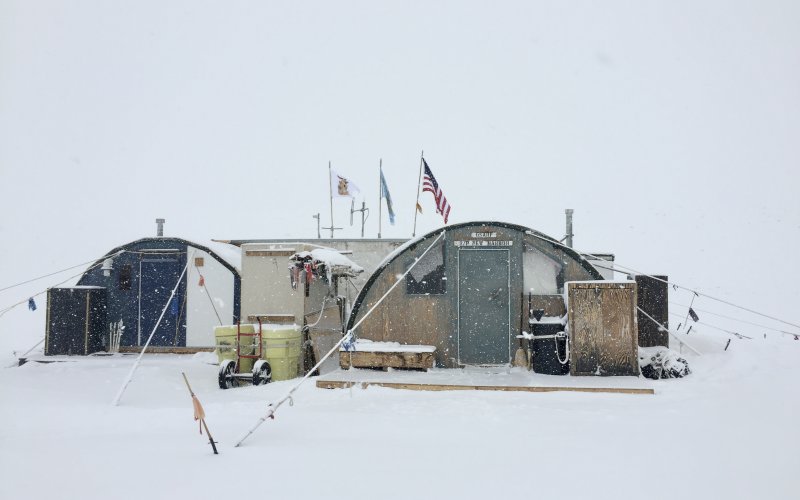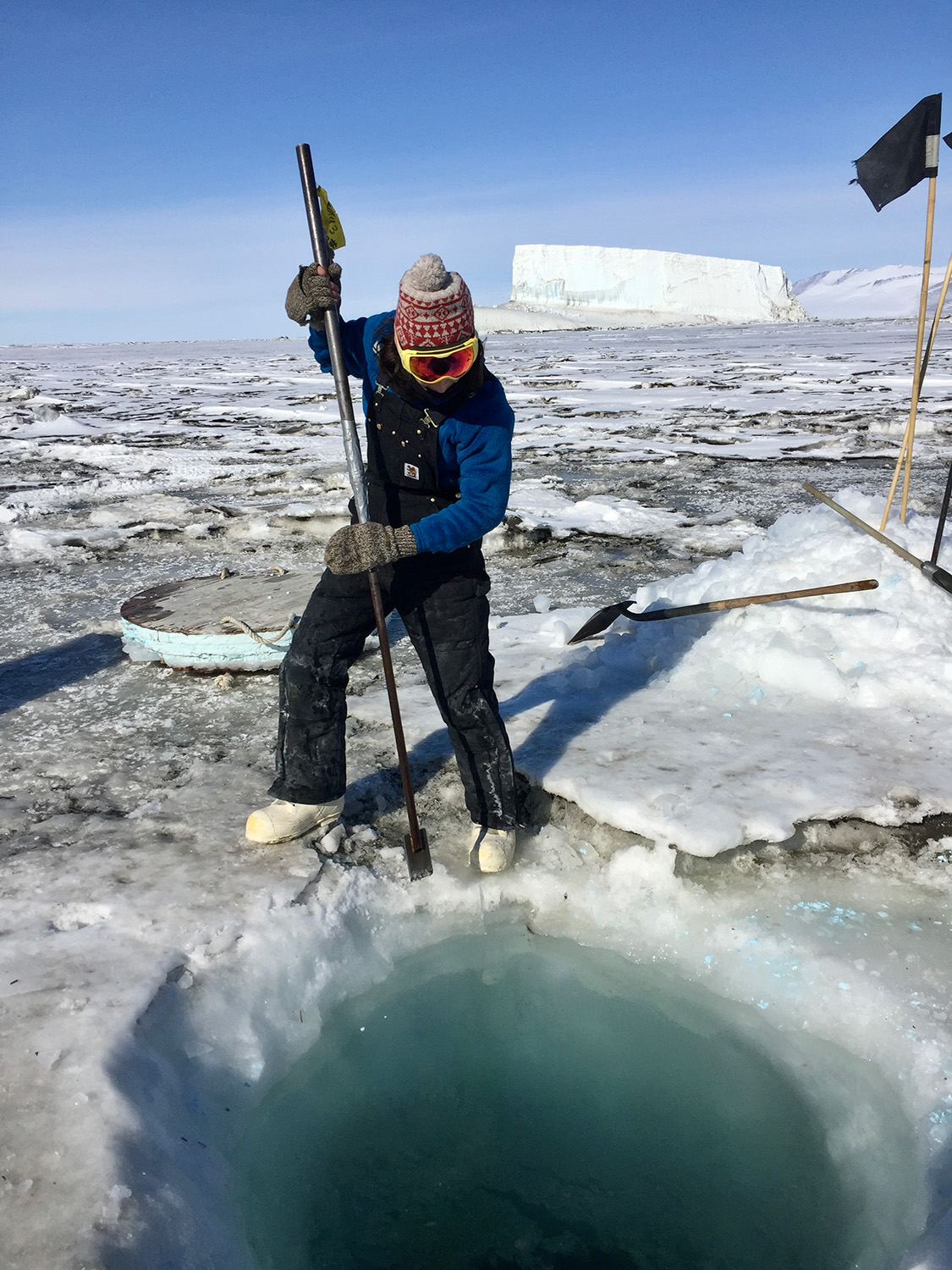Doctoral Student Shares Her Adventures as an Antarctic Researcher

By Heather Duncan, MPH student
ALBANY, N.Y. (March 28, 2023) - Amanda Andreas is living proof that a career in public health can take you on fascinating adventures. Her work as a doctoral student in the Department of Environmental Health Sciences has taken her all the way to Antarctica and back—twice. We sat down to talk to Andreas about the research she performed at McMurdo Station, the primary Antarctic research base for American scientists, in 2015 and 2016. She was there on a mission to collect specimens of tiny but important single-celled aquatic organisms known as foraminifera.
“Most people probably don’t know much about foraminifera, or forams for short, but they are globally important organisms that help protect and maintain the stability of our oceans, which, as we know, directly affects our global climate,” Andreas explains. “Forams have been called ‘nature’s masons’ because of their beautiful and intricate shells. I am a microscopist by training, and I think forams are some of the most exquisite organisms to image.”

But foraminifera aren’t just living works of art—they’re also important for another reason. Andreas and her mentor, Prof. Sam Bowser of the Department of Environmental Health Sciences, are interested in a particular species of foraminifera that lives in McMurdo Sound and produces a powerful bio-adhesive that composes its outer shell. Andreas collected specimens from the frigid Antarctic waters with the goal of gaining a better understanding of this bio-adhesive and characterizing how exposure to two common heavy metal pollutants, lead and cadmium, affects their ability to produce it.
“The primary goal of my research was to isolate and characterize this bio-adhesive and to determine if it binds lead or cadmium from the seawater. I found that both heavy metals negatively affect shell formation. I also determined that the bio-adhesive accumulates lead from the seawater, but not cadmium. This finding is useful from a public health perspective in that this unique bio-adhesive could potentially be used for bioremediation purposes to filter lead-contaminated seawater in areas of known heavy-metal pollution. Lead exposure is a global concern as is it toxic to humans (and marine organisms), and negatively affects human growth and development,” says Andreas.
But doing research in one of the most extreme environments on earth can be daunting. Just getting there can take several days. Researchers must first fly to New Zealand, where they are issued special cold weather gear and other special equipment. Then, weather permitting, it is another eight hours by military cargo plane to finally reach McMurdo Station. But before they can begin their work, Antarctic researchers must first spend about a week orienting themselves to the station and to their new environment: “We learn things like how to use a GPS device and hand-held radios, how to safely maneuver on sea ice, how to survive in cold weather/extreme situations, and how to operate a snow mobile. The SCUBA divers must also go through a series of dive safety checks with the dive masters on station.”

Only once they have passed safety checks and are adequately prepared for life in the Antarctic can the researchers then travel by helicopter to the site of their field work. For Andreas and her team, this was a location called Explorers Cove, approximately 30 miles across the ice shelf from McMurdo Station. Andreas describes daily life in the field camps as “strenuous but exciting. Days are spent making dive holes through meters-thick sea ice, diving to collect sediment, sorting and identifying foraminifera specimens, maintaining scientific gear, and performing experiments that can be done in the field. We also occasionally get to explore some of the incredible sights Antarctica - it’s like being on another planet.” Andreas recalls her favorite experience at field camp: “One day it was a complete whiteout and the next it was sunny and blue skies with the whitest snow blanketing everything as far as the eye could see. It was a magical sight. And yes, we had a snowball fight! Oh, and another highlight was seeing penguins in the wild – they’re one of the few animals we see above the ice.”
But experiencing Antarctica requires a “leave no trace” mentality, explains Andreas: “All of our food and drinking water is delivered usually biweekly via helicopter unless there is bad weather. The helicopter also takes our human waste and grey water back to McMurdo Station where it is processed at the wastewater treatment plant.” The last thing field researchers want is to disturb the fragile ecosystem of the Antarctic wild.
Once her research had concluded, Andreas had one more challenge ahead of her: get the foraminifera back to Albany alive and well. “Transporting cold-adapted organisms across the world – and keeping them cold – was a challenging and stressful experience! But I’m happy to report that both the forams and I made it safely back to New York.”
Today, Amanda Andreas is living in Missoula, Montana and working as an adjunct faculty member at the University of Montana. She was also recently awarded the Johanna M. Resig Foraminiferal Research Fellowship from the Cushman Foundation for Foraminiferal Research for the research she conducted in Antarctica. She will graduate from UAlbany in May of this year, but she does not believe she is done with her Antarctic adventures just yet: “I have only just begun to identify the usefulness of this species and I hope to expand my research, so my ultimate goal is to one day return to Antarctica.”


